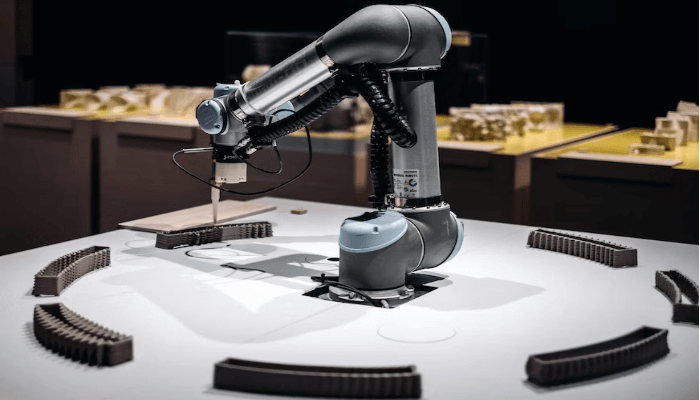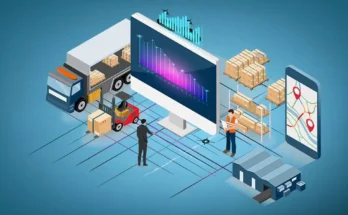Source: unsplash.com
Additive manufacturing or 3D printing is fast becoming a mainstream technology for a range of industries and applications. While it’s been around since the 1980s, it has taken off over the last decade due to a number of factors. The rapidly decreasing entry cost, in particular, means that 3D printing is expected to become an integral part of various manufacturing processes in the coming years.
The global 3D printing market is projected to exceed $37 billion by 2026. Here are some of the trends and developments that are shaping the space as we speak.
The global 3D printing Trends
1. New Materials
Materials innovation is one of the leading drivers of 3D printing adoption. Traditionally, companies have tended to use plastics and polymers for additive manufacturing. However, in recent years, there has been a greater synergy between manufacturing, technology, and material science, leading manufacturers to experiment with newer, more versatile materials.
This includes hybrid composites, metals, metal powders, glass, and even ceramic. New materials have helped lower the costs of 3D printing and diversify its applications for companies and startups entering the space.
2. Affordable Equipment
Perhaps the leading catalyst for 3D printing adoption has been the improved accessibility of equipment. With a wider user base, manufacturers of 3D printing equipment have been able to leverage economies of scale to bring down production costs and sell the products more cheaply.
3D printers were the first to become affordable, while 3D scanners remained expensive for a while. This led businesses to often outsource 3D scanning and modeling to specialized companies, leading to cost overruns and extended turnaround times.
With technology having advanced, companies now have many more options when it comes to affordable, portable scanners, letting them vertically integrate and innovate across the full spectrum of 3D printing.
3. Diversified Applications
Source: unsplash.com
A more cost-effective entry point, together with consistent innovation across the space, has helped companies find new uses for 3D printing.
The electronics industry and original equipment manufacturers (OEMs) have traditionally been the largest users of 3D printing. While growth in these sectors is expected to be robust, plenty of other spaces have now turned to additive manufacturing as well.
Medical research and development has emerged as one of the biggest applications for this. With 3D printing, scientists are able to create very lifelike models of bones, organs, and other body parts to help resident doctors and interns study and practice on the human anatomy.
Other industries that have made great strides with 3D printing include aerospace, automobiles, academia, architecture, real estate, and defense to name a few.
4. Hybrid Manufacturing
Hybrid manufacturing is a process that combines additive manufacturing with more conventional subtractive manufacturing techniques, such as Computer Numerical Control (CNC) machining and injection molding. Manufacturers are increasingly realizing the benefits of using these approaches in tandem to enhance efficiency while supporting innovation.
For instance, Mitsubishi Chemical America uses hybrid methods during their SPRINT prototyping process. They 3D print a mold using a dissolvable material. This mold is then used for injection molding to mass produce various products. This approach allows them design freedom while minimizing costs both during prototyping and mass production.
5. Automation
Automation has been a key focus for developers in the additive manufacturing space for a number of reasons. First, speed is still an issue with this space. While 3D printing is typically faster than conventional manufacturing methods for small batches, it has some catching up to do when it comes to large-scale production.
Improved software automation and more versatile machine frames able to handle a wider range of tasks can help significantly improve build-times for mass produced items. Automation can also help mechanize a number of post-processing tasks, which are largely still carried out by hand, and improve delivery outcomes.
6. Sustainability
Additive manufacturing is generally seen as a more eco-friendly production approach, given its on-demand, on-location nature. It’s also able to produce geometrically complex objects in a much more fuel- and material-efficient manner.
Recent years have seen manufacturers constantly working to improve on these advantages and make 3D printing even more sustainable. The diversification into different non-plastic, non-polymer materials is a big part of this. 3D printing companies are actively looking to leverage more renewable materials, such as bio-based plastics, to encourage more robust reuse and recycling throughout the production process.
7. Upskilling
3D printing completely alters the traditional manufacturing paradigm. Add to that the fact that it’s still a relatively new technology. This means that skilled workers, including engineers and designers familiar with 3D printing processes, have been hard to come by in the years past and a problem for 3D printing companies looking to scale.
However, the urgency to incorporate additive manufacturing processes is spurring the introduction of specialized courses in tertiary educational programes. There are increasingly more ways to upskill and reskill employees to help them be more productive at 3D printing, giving companies more options for their production lines.
Also Read: Artificial Intelligence for Making Faces: How to Use Technology to Create Unique and Fascinating Art
It’s not for nothing that 3D printing is projected to grow at a CAGR of over 23% until 2030. Industries across the board plan to leverage the technology to improve outcomes and efficiency and not just in manufacturing. As the pace of innovation increases to deal with challenges like climate change, supply chain crises, and global health challenges, 3D printing can help with rapid design, prototyping, and now, mass production of relevant solutions.




